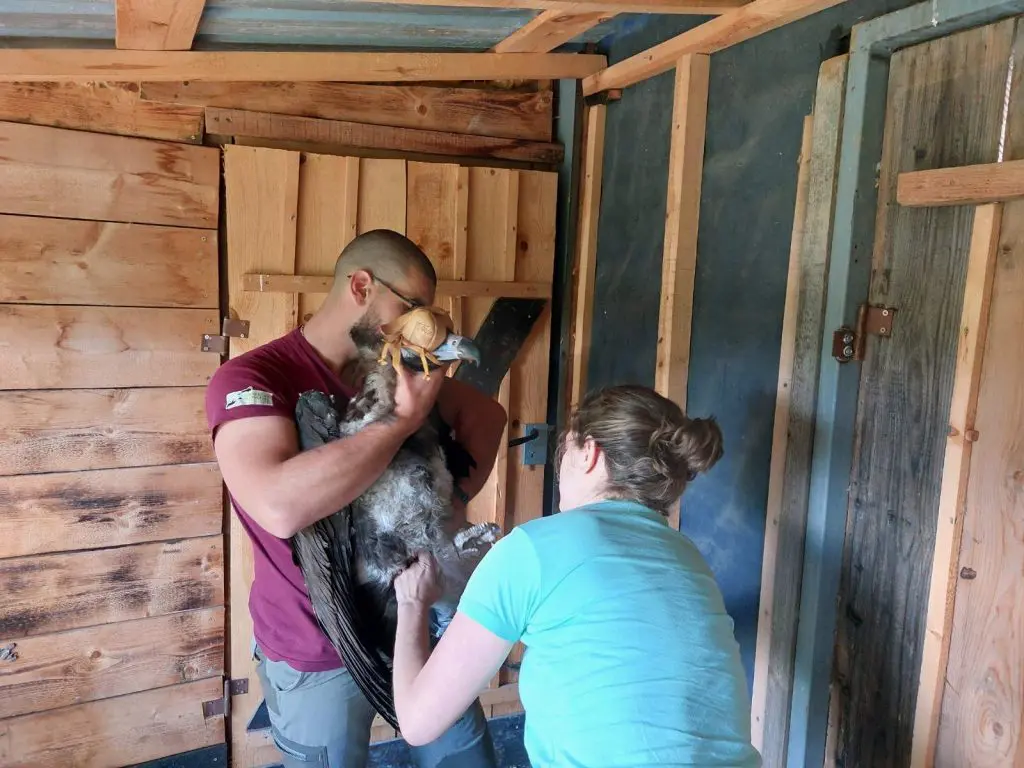
The Cinereous Vulture is the most endangered vulture species in Portugal. It went extinct over the 20th Century and naturally recolonized the country in 2010. Ever since its return, many conservation and monitoring actions took place to boost the population of the species in the country. In the southeast of Alentejo, an important breeding population of the species exist that represents about one-third of the existing pairs in Portugal. How many pairs successfully bred in 2020?
2020 breeding results in Herdade da Contenda
Liga para a Protecção da Natureza (LPN) in collaboration with Herdade da Contenda, Empresa Municipal (E. M.) and Instituto da Conservação da Natureza e das Florestas (ICNF) monitored the breeding productivity of Cinereous Vultures in Herdade da Contenda over 2020. This year, a total of ten Cinereous Vulture pairs nested in Herdade da Contenda, a farm in the municipality of Moura in the southeast of Alentejo, thus consolidating their recovery in the region.
Out of these pairs, three bred in artificial nests previously installed by the LIFE project “Habitat Lince Abutre” and seven in naturally built nests. Eight of these pairs were able to lay an egg (as is characteristic of the species), from which six young hatched. Unfortunately, three of these chicks did not survive, one of them due to a fall from the nest and the others for unknown causes, probably due to the extreme heat. Thankfully, the rest three males, have already passed the age of three months, and are at the stage where they are ready to leave their nests!

One of these young vultures was baptized Chaparrito and was recently equipped with a GPS tag in the nest by LPN, Herdade da Contenda and us here at the VCF.
These results, although representing another step towards the much desired and effective recovery of the species in Alentejo and Portugal, reveal the need to continue conservation efforts directed at the Cinereous Vulture to increase survival and success in reproduction. In particular, the need for closer monitoring of reproduction and intervention in critical periods of development of the young is stressed, especially during heat peaks and food shortages.
Following Cinereous Vultures in Portugal
In 2018, we provided the GPS tag for the first Cinereous Vulture to be tracked using a GPS transmitter in Portugal and we continued to tag more birds ever since. This information provided by tracking these birds is vital to reveal any threats the birds may face as the species continues to make a comeback across Portugal. The insight from this data will be useful for conservationists to enable them to carry out actions to reduce the risk the birds face and help support the species comeback. You can follow these birds online by visiting the maps that are generated from the data collected from the GPS transmitters.
Working for the recovery of Cinereous Vultures

With the recovery of the species in Spain, there has been a range of conservation projects supporting the conservation of the Cinereous Vultures in Portugal such as the cross-borderLIFE Rupis project in the Douro Canyon. Liga para a protecção da natureza (LPN) also led on a multimillion Euro conservation project, Habitat Lince Abutre, which came to an end in 2014 and was supported by the EU’s LIFE+ programme. The project established a network of 10 feeding sites and constructed 30 artificial nesting platforms in and around the Herdade da Contenda, which were instrumental to the successful breeding of pairs in southern Portugal.
Cinereous Vulture in Portugal
The Cinereous Vultures became extinct as breeding species in Portugal in the 1970s, mostly due to the use of poisoned carcasses targeting unwanted predators. An increasing population in Spain saw the species regularly visiting Portugal to forage, with the first pair breeding in central Portugal (Tejo Internacional) in 2010 (where now there is a small colony of more than fifteen pairs), and then in north-eastern Portugal (one single pair). And in 2015 the species recolonised Herdade da Contenda in south-eastern Portugal, and has bred there successfully ever since – there are currently ten breeding pairs there now.
Sign up to our newsletter and never miss any vulture news!







